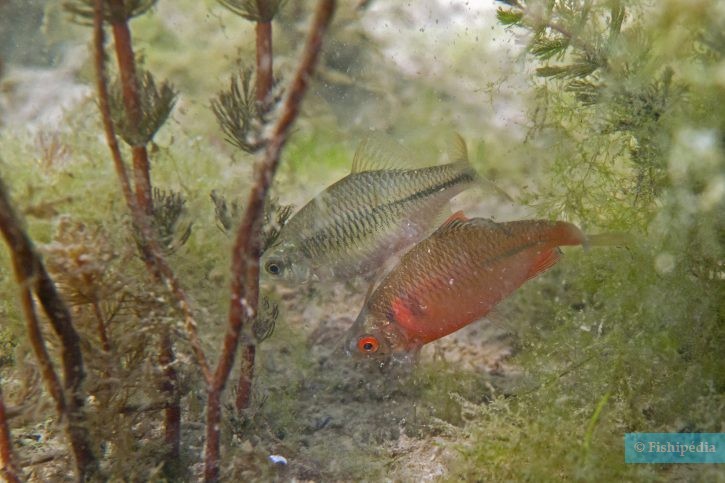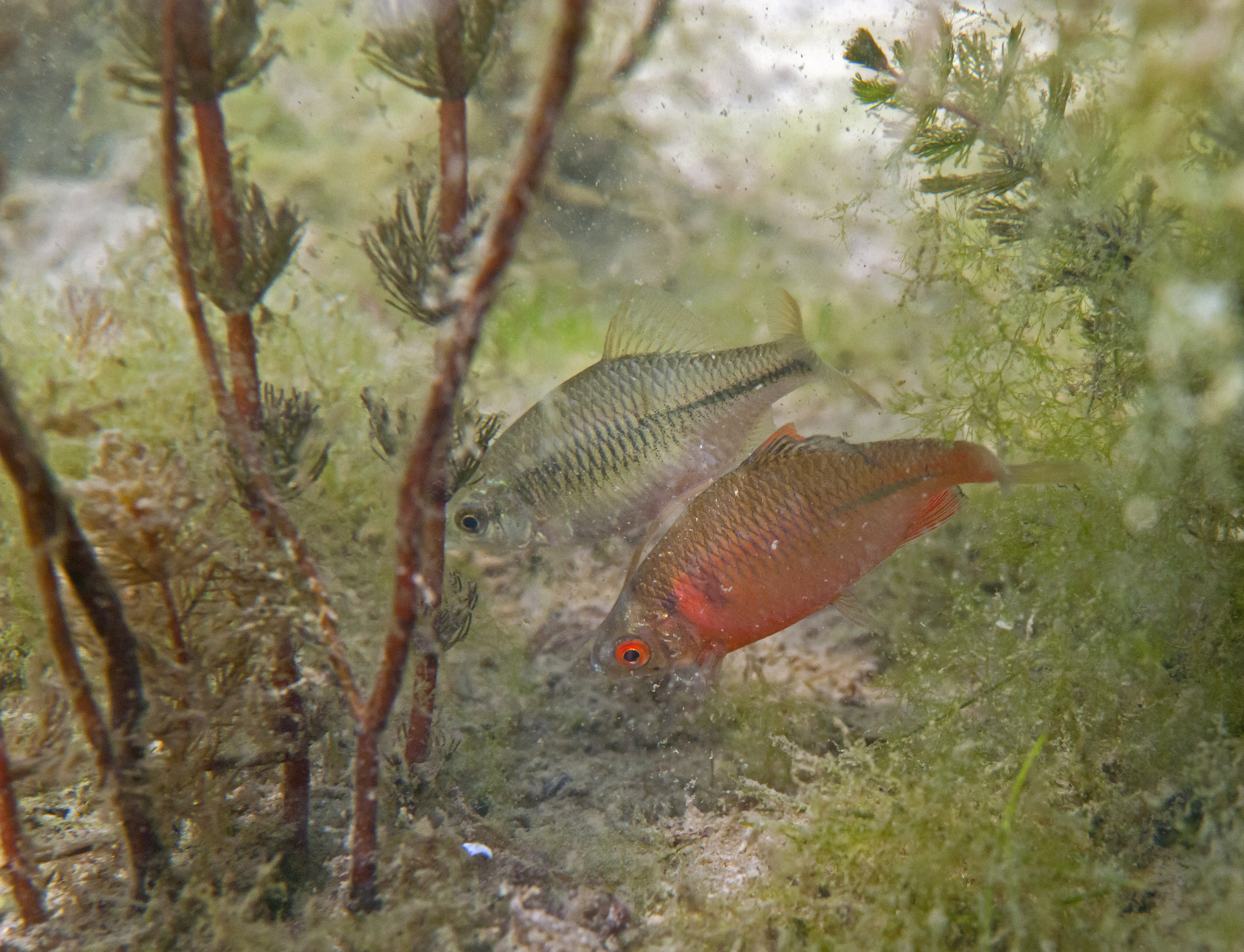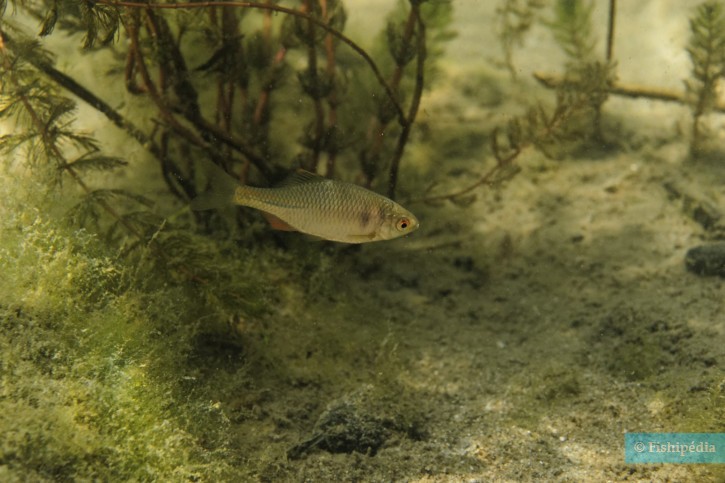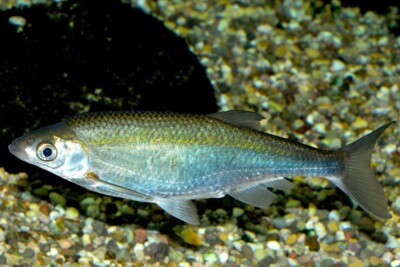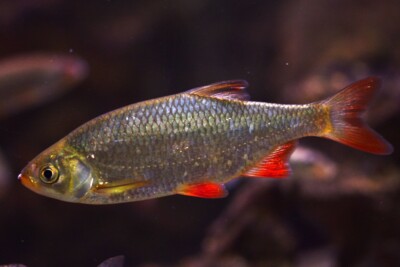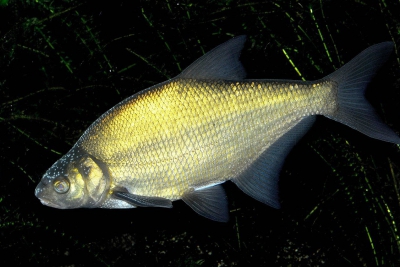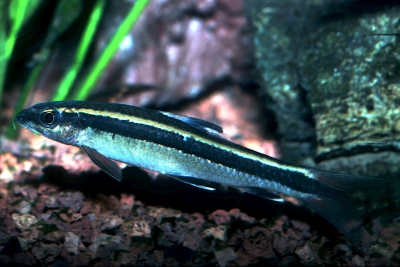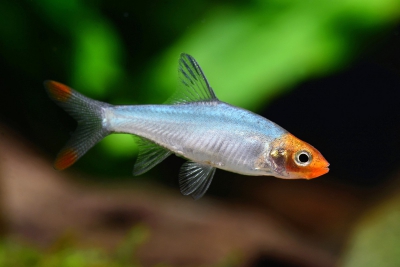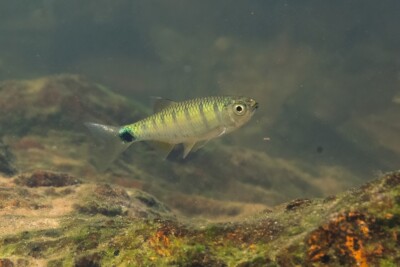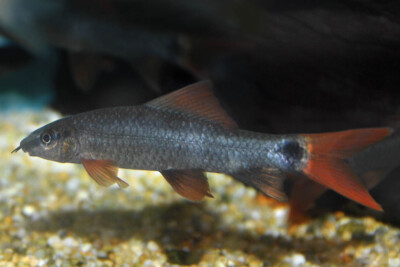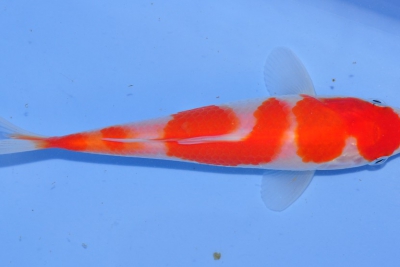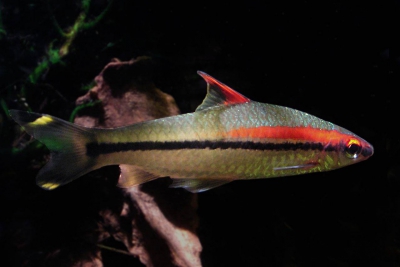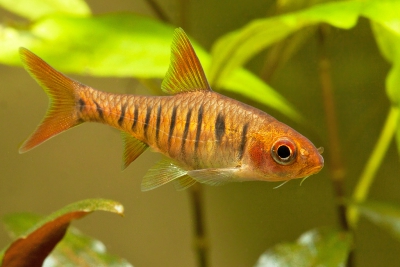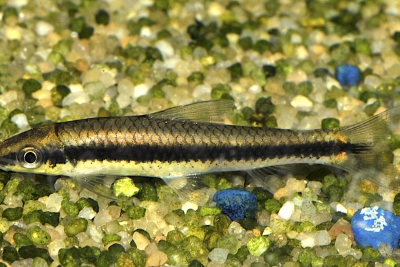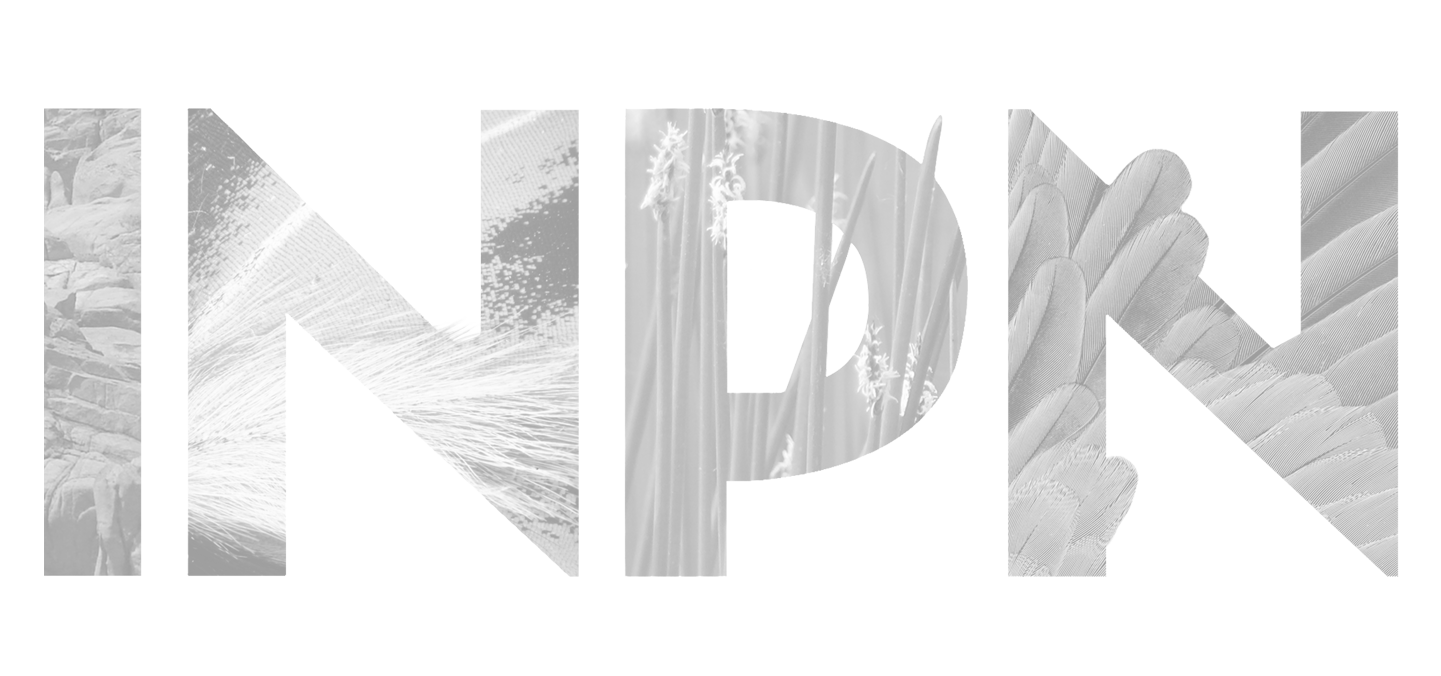Introduction
Rhodeus amarus, more commonly known as the European bitterling, is a freshwater fish found in Europe and Asia. Its distribution range is continuously expanding but it is absent from coastal rivers.
Who is it?
Morphology
-
Average size6 cm
-
Maximum size9 cm
-
Longevity3 year
-
ShapeOval
-
Patterndrawn scales
-
Average size6 cm
-
Maximum size9 cm
-
Longevity3 year
-
ShapeOval
-
Patterndrawn scales
How to recognize This fish ?
The European bitterling is a small fish with a short, high, laterally compressed body. The upper jaw is prominent.
The back is grayish-green, the sides silver, and the belly yellowish. A dark line runs across the second half of the body and extends to the caudal fin.
Sexual dimorphism
The adult male is larger than the female. During breeding, males display pinkish-purple iridescence, with a dark vertical spot behind the gills. The anal fin is orange bordered with black, the dorsal fin dark with a red triangle edging. Additionally, they have nuptial tubercles around the nostrils and above the eyes.
Behaviour & Life cycle
-
dietomnivorous with alguivorous tendency
-
Sociabilityliving in small groups
-
territorialNo
-
Way of livingdiurnal
The European bitterling is diurnal and tends to be gregarious, living in small groups. It is phytophagous (green algae, filamentous algae, diatoms) and detritivorous.
Reproduction
-
Reproductionovipare qui pond en eau libre
The reproduction of the European bitterling is specific. It requires the presence of bivalve mollusks, particularly Unionidae species like unio and anotontal. The female selects a mussel that produces a high concentration of dissolved oxygen at the exit of its exhalant siphon.
Equipped with an ovipositor, she inserts 2 or 3 eggs inside the mussel. The spawning is multiple, with a total of 40 to 100 eggs. The male releases its sperm in front of the inhalant siphon of the mussel to fertilize the eggs. The male protects the spawning area. The growth of the fry is rapid due to their large yolk reserve (the ovoid eggs measure 1.5*3 mm) and they come out of hiding once they reach 8 mm in size.
The species is known as an ostracophile.
Harmless species
This species does not represent any particular threats to humans when encountered in its natural environment.
Origin and distribution
Conservation status of populations (IUCN)
What is its habitat?
Natural environment characteristics
-
Temperature5 - 20 °C
-
pH (acidity)7 - 7.5
-
gh (hardness)10 - 20
-
FlowSlow and Stagnant
Biotope presentation
The European bitterling prefers calm, clear, and well-oxygenated waters. The environment must contain bivalves. The species inhabits shallow waters in areas with a high presence of vegetation (aquatic and marsh plants, decomposing organic matter, branches...).
Species of the same biotope
To go further
Sources & Contributions
Participation & Validation
The Fishipedia team and specialist contributors are committed to providing high-quality content. However, although the information comes from scientific sources or testimonials from specialists, the cards may contain inaccuracies.

Patrick Chartrer

Benoit Chartrer
Translation
Translation done with the valuable contribution of our translators, who make this information available to a wider audience. We sincerely thank them for their commitment.
